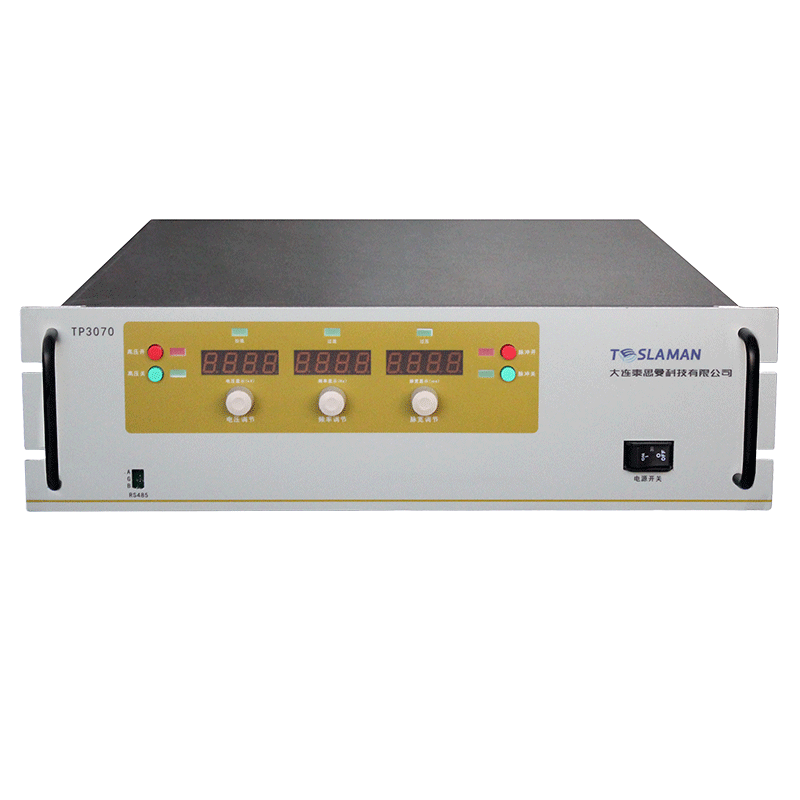High-Voltage Pulsed Power: Advancing Pulse Rise-Time Enhancement and Precision Control
In many pulsed-power applications—such as pulsed lasers, plasma generation, medical pulses, or materials processing—the rise-time (front edge steepness) and amplitude control precision of high-voltage pulses are critical. To achieve sub-10 ns rise times and maintain tight amplitude accuracy (e.g. ±0.1%), innovations in circuit topology, switch technology, and control strategies are necessary.
Reducing parasitic inductance and capacitance is fundamental. Compact layout, coaxial transmission lines, and use of low-inductance connectors minimize loop inductance. Parallel switch arrays drive the load in time-synchronized fashion to further reduce effective inductance.
Modern choice of switching device influences rise time significantly. Wide-bandgap devices like GaN or SiC MOSFETs offer very fast switching transitions (tens of nanoseconds), enabling sharp rising edges. Gate drive circuits must be designed with controlled slew rates, matched impedance, and minimal overshoot to preserve signal integrity.
Pulse shaping networks—composite of PFN (pulse forming networks), transmission line stacks, and matched terminators—ensure that the energy delivered to the load has minimal distortion. Critical is the design of impedance matching and damping to avoid reflections or ringing that corrupt rise edges.
To maintain amplitude precision, the control system must monitor the actual output waveform in real time. A fast voltage probe captures the rising edge, and the feedback controller (often implemented in FPGA) adjusts subsequent pulse amplitude by modifying precursor firmware timing or trigger delay. Adaptive algorithms correct for systematic errors, device drift, or load variation.
High-voltage precharge and soft-start circuits prevent overvoltage overshoot during switch closure, preserving component safety while enabling fast edge formation. Active snubber circuits or clamp networks absorb transient energy spikes and protect the switch from voltage overshoots.
In high-repetition-rate systems, thermal management and charge recovery become critical. The power supply integrates energy recovery circuits, where unused energy in the load is fed back into storage capacitors, reducing wasted energy and enabling rapid repetition without overheating.
Experimental demonstration of such a system often shows rise times of 5–8 ns with amplitude stability better than ±0.1% across thousands of pulses, supporting high-precision applications in pulsed diagnostics, beam modulation, and fast transient generation.
Dynamic Matching Control Technology of Tube Voltage and Tube Current in X-Ray Tube High Voltage Power Supplies
The performance and imaging quality of an X-ray system rely heavily on the dynamic coordination between tube voltage and tube current, both of which are governed by the high voltage power supply. In X-ray generation, the electron beam emitted from the cathode is accelerated by the tube voltage and modulated by the tube current. Any mismatch or instability between the two parameters leads to dose inconsistency, poor image contrast, and premature aging of the X-ray tube. Therefore, precise dynamic matching control is a critical function in advanced X-ray high voltage power supplies.
Modern high voltage supplies implement dual closed-loop regulation—an outer voltage loop and an inner current loop—to maintain real-time synchronization. The voltage loop ensures that the anode voltage follows the reference profile, while the current loop limits the emission current within safe and optimal ranges. Fast digital controllers, typically FPGA- or DSP-based, execute high-frequency sampling and feedback correction to synchronize voltage and current transitions within microseconds. Predictive control algorithms are further applied to anticipate tube load variations and pre-adjust drive signals to maintain constant X-ray output intensity.
The dynamic matching control also involves transient suppression techniques during exposure initiation. At startup, the rapid rise in voltage can trigger transient overcurrents due to space charge effects. To mitigate this, soft-start voltage ramping and real-time filament current compensation are employed. These measures reduce thermal stress on the cathode and prevent emission overshoot.
Moreover, adaptive modeling of the X-ray tube’s nonlinear characteristics enhances control precision. Equivalent circuit modeling, which incorporates tube impedance, cathode emission temperature, and space charge behavior, allows the power supply to dynamically predict the optimal tube current corresponding to each voltage level. When exposure parameters change rapidly, such as in pulsed radiography or dynamic imaging, this modeling-based predictive regulation ensures stability of both the voltage rise time and current plateau.
Protection circuits are integrated into the control loop to detect arc discharges or insulation breakdown within milliseconds. These circuits isolate the tube and reset the system before reactivation. The combination of fast feedback, adaptive prediction, and protection algorithms allows the X-ray high voltage supply to achieve sub-1% fluctuation in X-ray output intensity, ensuring consistent image density and prolonged tube lifetime.




















